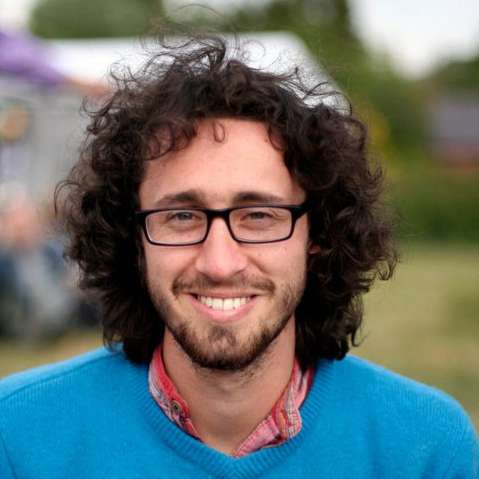No exploration of the relationship between spirituality and 20th-century music can delve to any sorts of depth without discovering the figure of Olivier Messiaen, the religiously-influenced composer par excellence in a century characterised by the emancipation of art from religion. The programming of his Des canyons aux étoiles was thus a fitting if intense end to the first day of The Rest is Noise’s “Politics and Spirituality” weekend at the Southbank Centre. An orchestral journey from the solid, massive rocks of the vast American canyons upwards via the stellar mystery of outer space to Messiaen’s musical vision of the Celestial City, this 12-movement work is epic in both content and length, lasting an unrelenting hour and 45 minutes. Christoph Eschenbach conducted a tireless London Philharmonic Orchestra and quartet of instrumental soloists in this mammoth musical undertaking, which is in equal measures exhilarating, exhausting and all-encompassing for performers and listeners alike.
The odyssey is certainly not a smooth one. Fluttering between the desert (movement 1), the stars (movements 3, 6, 8 and 12) and the rocky outcrops of Cedar Breaks and the Bryce Canyon (movements 5 and 7 respectively), the musical landscapes are interspersed with Messiaen’s famous ornithological representations. Orioles, robins, mockingbirds, wood thrushes and native Hawaiian birds are all instrumentally imitated with the rhythmical and melodic instability the composer borrows so remarkably from birdsong. Chief among the bird callers was piano soloist Tzimon Barto, a barrel-chested pianist of rather herculean proportions, whose arrival on stage made me wonder if this impeccably dressed gentleman was here to shift the instrument, rather than make it sing like any number of birds. Barto’s hulk-like stature did nothing to prevent his playing being infused with daintiness and sensitivity when required, and it rendered even more spectacular the passages in “Le moqueur polyglotte” (movement 9) when Messiaen has his pianist lean their forearms silently on the keyboard and then forcibly strike the bass notes, allowing the exposed strings to resonate with the resulting vibrations. The expressions of boyish excitement, and even amazement, on Barto’s face as he flittered and sparkled his way through his two incredibly virtuosic solo movements were a sheer joy to watch.
In fact, Barto’s expressiveness and character contrasted strongly with the cold, grand, expansive sublimity of many of Messiaen’s more fully orchestrated movements, especially those depicting the extraordinary geological formations of the eponymous canyons. “Bryce Canyon et les rochers rouge-orange” is the central, and longest, movement of the work, and it is both brilliant and gruelling in its relentlessness. Throughout, tuned percussion play a crucial role in Messiaen’s soundworld, and in this movement the ear becomes saturated with the high sonic overtones provoked by bell-like instruments. These passages are juxtaposed in blocks of sound with ponderous, very slow, tutti unison sections; like overexposure in the harsh, sun-struck rocky landscape, the music is dazzling, but simultaneously heavy, fatiguing and unnervingly inhuman. It’s an extraordinarily vivid, almost physical evocation of this incredible, alien landscape, but it’s pretty tough going.
What comes next is refreshing in its cool otherworldiness. “Les ressuscités et le chant de l’étoile Aldébaran” is celestial balm for those who make it passed the crushingly imposing canyons, providing harmonic shade and timbral nuance in its eerie piccolo and xylorimba duet – the latter played by another soloist, Erika Öhman – over a bed of strings. The result of its shifting harmonies and mysterious musical distance is a sort of spiritual redemption, albeit an estranged, extraterrestrial one.
I’m sure it’s clear that this was a thrilling performance. Eschenbach and his players were unflagging in their energy and each individual player navigated his or her immensely challenging part expertly. If Messiaen’s penchant for complex cross-rhythmic tutti sections to be abruptly interrupted by silences exposed the occasional slightest lack of synchronicity across the stage, it was not to the detriment of the music. Horn soloist John Ryan performed the virtuosic “Appel interstellaire” with seeming ease, and Andrew Barclay’s solo glockenspiel playing was startlingly dexterous and exciting. And the orchestral percussion players, each with their own battery of variously-sized instruments, deserve special praise.
It was Messiaen’s uncanny ability to conjure up not just the sights and sounds but the other senses of his remote and diverse locations that left me feeling both in awe of and unnerved by this incredible piece of music. Deserts, rocks, stars, and even birds: all these are miracles of our universe, and symbols of things beyond human comprehension. These sublime aspects of nature were here startlingly represented in all their splendours and intricacies, but – Barto’s excitement aside – there was no warmth, no love. Doubtless, this is a testament to Messiaen’s understanding of divinity, but it seemed a pretty chilling, hopeless one to me: that is, until the truly rich, final chords rang out in the strings like a long awaited, humane homecoming.


